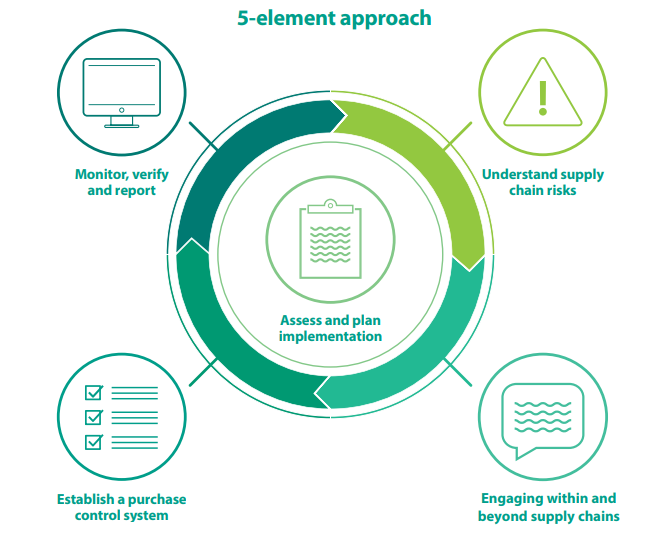The Soy Toolkit is designed to support companies in the responsible sourcing of soy. It is an accessible guide to the many initiatives which aim to decouple soy production and trading from deforestation, conversion of native vegetation and human rights violations.
These are the business benefits of sourcing soy responsibly.
In March 2021 we held a webinar to launch the recorded videos corresponding to the 5 elements of the Soy Toolkit’s responsible sourcing process. The speakers were Renata Nogueira from Cargill and Caroline Westerik-Sikking from AAK, and the webinar is recorded in both English and Portuguese.
Please press play to view below.
The recorded webinars are available here.
The 5 Elements
The 5 elements of the responsible sourcing of soy:
ELEMENT 1: ASSESS AND PLAN IMPLEMENTATION
A sustainable soy sourcing implementation plans help a company to strengthen understanding of its strategy, steps, responsibilities and timeframes. It also helps to monitor progress against your responsible sourcing commitments.
ELEMENT 2: UNDERSTAND SUPPLY CHAIN RISKS
Companies need to know where their soy is coming from to assess compliance with their policies and to ensure that, whenever a supplier fails to meet the policy criteria, an appropriate plan for full compliance is in place. Risk analysis is a useful approach to support the prioritisation of resources, identify appropriate actions and plan for interventions, especially for downstream companies.
ELEMENT 3: ENGAGING WITHIN AND BEYOND SUPPLY CHAINS
While there is no pre-defined system for supplier engagement, companies can use a framework of good practices, such as:
Awareness raising and training: providing workshops, materials and webinars for suppliers;
Establishing purchase control systems: setting up procedures or systems to cross-check every single soybean purchase against a set of criteria, to be implemented by upstream soybean buyers;
Encouraging suppliers to join continuous improvement programmes.
ELEMENT 4: ESTABLISH A PURCHASE CONTROL SYSTEM
Clarity over companies’ actions depending on suppliers’ different levels of performance allows for faster and safer decisions. In this element, companies will understand how to implement a purchase control system that will enable sourcing procedures to address the requirements of soy sourcing policies, bearing in mind the prevailing sourcing models.
ELEMENT 5: MONITOR, VERIFY AND REPORT
Monitoring, verifying and reporting, both internally and externally, doesn’t only allow to track progress and review goals and strategies, but also increases transparency in a sustainable soy supply chain. This strengthens credibility and accountability for commitments and implementation.





